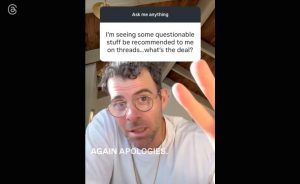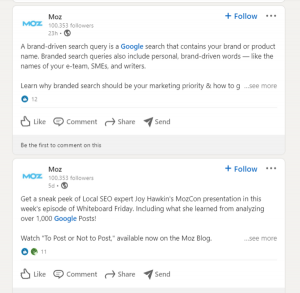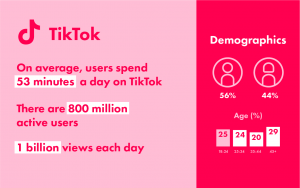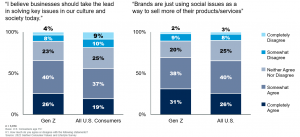
Now that’s a headline that gets your attention, right?
And when I saw that headline reporting on a speech provided by a Forrester executive, it made me pause.
Speaking at the Lithium Technologies LiNC conference in San Francisco, Forrester Research vice president and principal analyst Nate Elliott dropped a bomb on brand managers: you don’t build a community on social or have any meaningful customer relationships on Facebook:
There’s no community there. This notion of “build a community on Facebook,” I’ve never seen any brand successfully build a long-term community on Facebook. Maybe around a topic for a week, people come together, but conversations aren’t threaded. They’re not archived. There’s never been a meaningful community there. Even pages that get lots of likes on posts, and comments and shares, there’s not a community there.
The notion that you build a community on Facebook, and that we call people who manage the pages Community Managers, it’s always been a pipe dream. If you want a community, you need to build a community, and that means a branded community on a domain you own.
I am generally a fan of Forrester and their research but this observation has me dumbfounded. I wasn’t at the conference and there is a chance the reporter took the quote out of context, but I have rarely seen a published opinion that I disagree with so profoundly. Here is why companies can certainly build communities on social media and, in fact, they are doing so.
1. Go to where the people are
What happens if every company followed Elliott’s advice and focused solely on building a proprietary community? Instead of becoming part of a natural gathering of people on Facebook, LinkedIn, or YouTube, they only focused on driving people to their own sites? First, the resources to do that would be staggering. Second, do you really want to log in to every company’s site every time you want to interact with them? For most companies, wouldn’t it make sense to just build a community where the people are already gathering?
Here’s an example. I worked with a very large company who actually tried to create their own private community. There were two reasons for this — they didn’t want to have customer conversations in public where competitors could see them and they did not want negativity and problems from customers out in the open. Even though this was a very popular company, there was almost nothing they could do to actually get people to log in…maybe.
I did research to show them that their fears of exposing customers and negativity where unfounded and they agreed to open up a page on Facebook. Within three months, the community activity was 500 percent higher than after three years of trying to create a private community.
2. It’s cost prohibitive
Most brands are not conversational. If you work for Nike, McDonald’s, or Disney … well then yes, you can probably build a lively proprietary community. Those are conversational brands with tons of resources to create enough value to make somebody want to subscribe and log-in on a regular basis.
But what about Jiffy-lube? Or Honda lawn mowers? Or Mellow Mushroom (my favorite local pizza place)? Those are all great brands but I’m not sure I would ever think to log into their site. I might follow them on Facebook, however. In these cases, not only are you creating a private community (not cheap), you would have to produce enough content to transform into a conversational brand. That would take a ridiculous amount of money. Instead, I would probably take a fraction of that budget and create a really great public YouTube channel, for example.
3. A focus on content + connection, not platform
What builds a community? Is it merely building a presence on Facebook, or is it connecting with people there in a distinctive and helpful way?
I would argue that if you provide great content and helpful connection, you can build an effective community on Facebook more easily than through your own site. It’s not so much where you do it but how you do it.
An example is Tourism Australia. This is an organization that has created one of the most vibrant Facebook communities on earth through amazing photographs and a fun and unconventional view of engagement. I love going to their page but realistically, how often am I going to visit their website? Maybe when it’s time to plan a trip? Which leads me to this final point on the nature of social media community…
4. Weak links and the Alpha Audience
There is some merit in Elliott’s perspective if you think in terms of activating people to create some value for your business. In my book The Content Code: Six essential strategies to ignite your content, your marketing, and your business, I call this your Alpha Audience — the bedrock of your business. But I believe he is thinking about it the wrong way. Let’s dive into this idea a little.
You social media connections are generally weak relational links. They may “like” something but they won’t necessarily buy something. A better predictor of those who actually create value for your business is determining those who are sharing your content. When people share, they are saying “I believe in this and you should too.” They are becoming advocates. I believe that this is the true community you need to seek and nurture.
You can’t own this audience, which is what I think Elliott dreams is possible if you had your own online community. I don’t believe you can own an audience by any means, and probably never could. But that doesn’t mean you can’t build a proprietary, actionable audience who collects around your content and your brand.
In this strategy, your content — wherever it is — allows you to open new doors in an unprecendented way (the weak links). Over time, you have the opportunity to turn them into stronger links that actually do something. In my mind, this is the real value of content and social media marketing today and the primary theme of The Conten Code.
I think today we must focus on building community wherever our customers want to be. Connect with them through content that creates interest and eventually inspires loyalty. That is the possibility and promise of social media community.
Your thoughts?
Illustration courtesy Flickr CC and Franciso Orsorio
(196)









